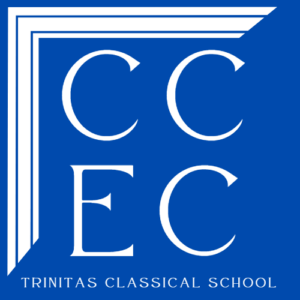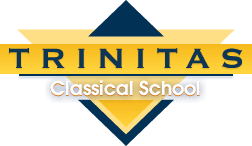 We took a break in our series on the three “R’s” of education to draw attention to our Virtue Home Connection. If you did not read that post, please do–We need you! In this post, we return to our discussion of the second “R”: ‘Riting [a.k.a.”Writing”].
We took a break in our series on the three “R’s” of education to draw attention to our Virtue Home Connection. If you did not read that post, please do–We need you! In this post, we return to our discussion of the second “R”: ‘Riting [a.k.a.”Writing”].
In our earlier post on writing, we looked at Francis Bacon’s famous quotation: “Reading maketh a full man; conference a ready man; and writing an exact man.” It is through the process of writing that one remembers, organizes, analyzes, tests, and extends observations and ideas. It is through the process of writing that one does not merely “express oneself” but one becomes more “exact,” conforming one’s thought more and more to the realities, the possibilities, and the promise of God’s world and the Word. Cultivating the skills for such writing requires intentional instruction.
Before looking at some of the specific ways we do this in kindergarten through grade 4 (we will look at grades 5-8 next time), it may be good to think about a couple of analogies. When a student learns to play a sport or an instrument, he or she is not, for example, just given a ball or seated at the piano and told to “play.” The student receives detailed instruction involving observation, imitation, drills, and, of course, practice, practice, practice. The student is corrected and encouraged along the way of a well-thought-out path. It is not until many fundamentals are mastered, good habits formed, and a strong foundation built that the student is able to begin to exhibit creativity and self-expression and play the game or the music more “freely.”
This is the approach to writing instruction we take at Trinitas. By way of contrast, a non-classical approach to writing involves a strong emphasis on self-expression and creativity right from the very beginning. Students receive less explicit instruction in observation and imitation, there are fewer drills and occasions for practice or re-writing and less correction. To put it simply, this non-classical approach to writing resembles a non-classical approach to art where students are told to draw a self-portrait and encouraged to be creative in expressing themselves, but are not, for example, given instruction in time-proven methods for learning how to accurately draw a face. Students of this more “modern” approach are left without a strong foundation.
So, what does building a strong foundation in writing look like at Trinitas? In kindergarten, students are already practicing skills of observation and imitation as they hear and talk about good stories and when they act out stories together. The class recently did this with the story of The Little Red Hen, also highlighting the virtues of Responsibility and Work. Later this year, they will learn about the parts of the story: character, setting, problem, and solution. Kindergarteners will first learn to identity those parts in the stories they read; then they will work to create their own stories that include those components.
First and second grade students continue developing their skills of observation and imitation as they learn how to outline and re-tell and re-write from an outline. They are taught the structure of sentences and the various parts used to improve their precision in writing, for example, “dress-ups” and “openers” like -ly words (adverbs), strong verbs, and quality adjectives. As the class learns about quality adjectives, for example, their teacher uses a version of The Three Little Pigs with all the adjectives removed. As a class, they will learn to add quality adjectives to the story. Together they may read a paragraph about squirrels, and then, as a class, they will decide the key words for an outline. The teacher will write them on the board, and the students will copy them. Later they will re-tell and re-write from the outline, incorporating the parts of speech they are currently focused on. Cross-curricular connections are often made. Recently, the students modeled their own animal stories on Rudyard Kipling’s Just So Stories in preparation for our Thoughtful Reader Book Club event. All this proceeds quite slowly with a class of first and second graders, but building a strong foundation takes time.
Third and fourth graders are ready for a more intensive program with additional time for practice. They cultivate skills of observation and imitation with continued outlining, re-telling, and re-writing. They act out Aesop’s fables and then write fables of their own, changing the character and setting and other details. Using picture books (without words) as inspiration, the students spend time telling the stories themselves. With further instruction about the parts of a story and learning to identify those in fairy tales, students use these as models for writing their own books for our Young Authors event. Students continue to progress throughout the year in their use of more sophisticated parts of speech in their writing, developing their vocabulary with strong verbs and quality adjectives and adverbs. They work on varying their sentence length and transitions and on starting their sentences with subjects, prepositions, and –ing words (participles).
Writing instruction and practice are woven across the subjects. During their study of Africa, the third and fourth graders take notes on three selected animals or landforms and are shown how to compose a three-paragraph essay. They also receive instruction in five different forms of poetry throughout the year and again do cross-curriculum writing using poetry in Bible class. They continue to study grammar and spelling during designated class time, all of these things coming together in the writing process to more fully develop the precision of their thinking and communication.
In our next post, we will look at how Trinitas continues to build on this foundation in grades 5-8. In the meantime, we encourage you to watch this six-minute video which shows the power of observation, imitation, critique, encouragement, and revision to produce excellence in student work.
https://modelsofexcellence.eleducation.org/resources/austins-butterfly
© ALP
